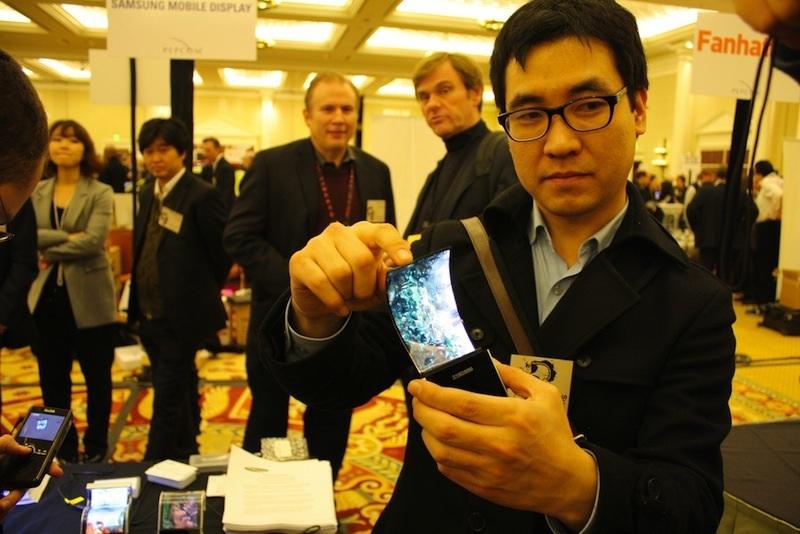'Huge' orders for Samsung's flexible OLEDs spark rumors of Apple interest
Citing industry sources in the Far East, The Korea Times reported that Apple is "likely" to be one of the handset makers who will ask Samsung to provide them with flexible OLED screens. Mass production of bendable OLED screens is scheduled to begin in the second half of 2012.
Talk of Apple and flexible OLED displays surfaced after Samsung Electronics Vice Chairman Kwon Oh-hyun revealed his company has seen "huge" orders from device makers for its pliable organic light emitting diode displays.
The report from Korea said while a flexible OLED will not be found in Apple's sixth-generation iPhone, expected to be launched later this year, it's possible that Apple could adapt the technology in the future, for what it dubbed an "iPhone Yoga."
Initial production of flexible OLED displays will be limited. Samsung has a number of lines dedicated to the technology at a factory in Tangjeong, South Korea, but they will only produce 960,000 OLED sheets by the end of 2012, the report said.
Samsung Mobile Display showing off a flexible display at CES 2011. Source: OLED-Display.net
The bullish comments from Kwon led some who spoke with the Times to infer that Apple is behind the company's optimism for the future of flexible OLEDs. One anonymous source noted that Apple sets the trends that the rest of the industry follows.
"If Samsung finds increasing industry demand for a futuristic product like flexible displays, it's hard to imagine Apple doesn't have something to do with it," one person was quoted as saying.
Earlier this year, another report claimed that Apple was investigating flexible panels for potential use in future iPad models. Apple currently does not use AMOLED screens in any of its products, instead relying on traditional LCD screens with in-plane switching technology for superior viewing angles.
 Sam Oliver
Sam Oliver











 Mike Wuerthele
Mike Wuerthele
 Malcolm Owen
Malcolm Owen
 Chip Loder
Chip Loder

 William Gallagher
William Gallagher
 Christine McKee
Christine McKee
 Michael Stroup
Michael Stroup
 William Gallagher and Mike Wuerthele
William Gallagher and Mike Wuerthele







